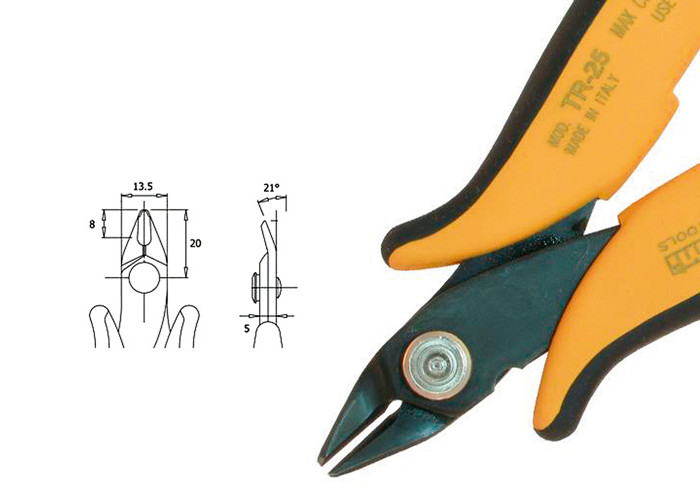Often when discussing issues of manufacturing and repair of electronics we focus on large equipment, assembly lines, soldering stations overlooking what seems obvious – hand tools. In this article we will look at this often neglected issue. We will see whether the “what for – you can bend it with pliers” approach still has a place in a modern service or manufacturing company and whether it is simply worth it.
There are many manufacturers of large devices for the electronics industry. From those of the highest quality – such as YAMAHA SMT lines to those “no name ones” with products of dubious quality. Looking at this, it may come as a surprise that the complete opposite is the case when it comes to small, professional tools for this industry. In this study, we will look at the offer of a key manufacturer that has specialized in top quality products for narrow use in the electronics manufacturing and repair industry – Piergiacomi.
Electronic components are most often shipped in bulk packs or tapes with the leads aligned in a neutral way – allowing them to be set and cut to lenght.
The way components should be set up, cut and assembled is most often determined by the ordering party and the subcontractor by choosing the international IPC standards and one of their defined realization classes. Consistency with the standards and the resulting quality of workmanship is very important for the reliability of the end product and thus the reputation of the contractor. For this reason, trainings on IPC standards are conducted all over the world in order to standardize production and consolidate best practices. In Central and Eastern Europe, the largest and longest operating IPC Authorised Training Centre is the Polish company RENEX EEC – more at www.ipctraining.pl
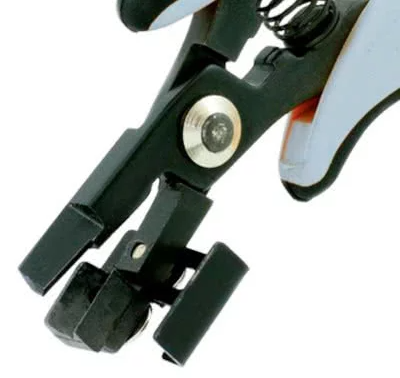
Virtually any bending and shortening of the leads (so-called feet) – made of thin wire – can be done with pliers or other simple tools. Of course, to avoid problems with damage due to electrostatic discharge, these should be at least ESD protected tools. This is the simplest way and therefore still widely used.
This method, although simple, is very imprecise. In order to bend and cut the leads within the accepted standards, it requires a lot of skill from the person performing it and leaves a lot of room for error. Repeatability of human hands will never be perfect and time efficient.
The problem, which may seem trivial, can be easily analysed and recalculated taking into account such factors as the time needed for one person to adjust all the leads of one component, the average number of components damaged in the process, the total number of components and the number of people performing the task. Losses in this area, especially due to labor costs, where the process of the repetitive, tedious and yet precise task of pinout is completely non-automated, are almost always significant.
However, this is a problem that can be easily solved with very little expense and almost immediately. Equipping workstations with affordable specialist hand tools allows to significantly accelerate this process, its quasi-mechanization and, consequently, significant reduction of working time. At the same time, the aesthetics of the ready PCBs increases – which is of increasing importance in the growing competitiveness in the industry.
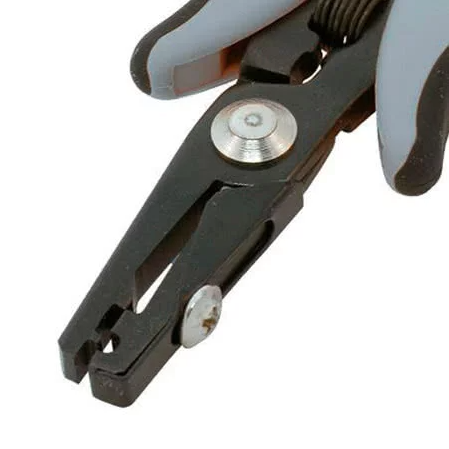
Below we present a few tools from Piergiacomi offer. These are selected items that are examples of the capabilities of such solutions. More details are available on the website of the brand’s long-term Polish distributor – RENEX Group – at www.sklep.renex.pl.
The simplest of Piergiacomi specialist tools, from which it is worth starting, is PN 5040. This device allows bending of leads at the angle of 90 degrees. So it performs a seemingly simple task – even with non-specialized tools. However, it excludes potential deviations from this angle – ensuring repeatability and speed. Another very popular tool, even among hobbyists, is the PNR series of special pliers, such as the model 30D. With this tool we are able to shape the lead of the component in such a way that we create a so-called snap – in this case in the shape of the letter C.
Such a shape allows to keep the body of a component – e.g. a resistor – at a certain height above the PCB. This solution is particularly useful considering IPC standards which define, among others, the distance at which the housing of a given type of component should be placed above the PCB surface. It is also related to any vibrations that the final product may be subjected to or the possibility of transmitting those vibrations to the components. Within the PNR series, there are also tools that can be used to shorten the lead-out in addition to shaping it. An example of this is the PNR 5000D which shapes the lead into a C-clamp and simultaneously trims the leg to the desired length from 4 to 16mm. This allows in one move to achieve the target lead length – without further rework, and in accordance with standards – e.g. common values for pin A on the schematic – 12.7mm, 10mm, 7.62. This prevents loss of material that can occur in cases of human error – e.g. when the lead is cut too short. It also eliminates situations when leads are incorrectly trimmed after soldering – which weakens connections. In addition to precision and time savings, high repeatability and aesthetics are key.
Another interesting type of hand tool is the PTR 30D model – allowing to cut the lead of a component to the appropriate length, but other than the previously discussed its shape. Special pliers of this type allow simultaneous bending of the legs in two places at the angle of 90 degrees in such a way that their spacing will be precisely adjusted to the holes in the PCB and the component will be placed at the right height above its surface. A similar application is the PN5050 series – which also allows you to match the leads to the spacing of the holes – in this case putting one of the component’s legs forward by a certain raster – according to the standards adopted in electronics – e.g. 3.81mm, 5.08mm e.g. in TO 220 or TO 247 enclosures.
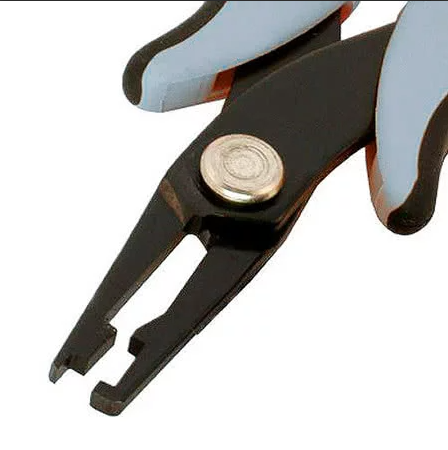
Tweezers
The discussion of PIERGIACOMI hand tools would not be complete without mentioning tweezers. As part of ESD safety standards in the electronics manufacturing and repair industry, models made of antistatic and acid-resistant materials are used. There are also nickel, nylon and Teflon-coated versions. This reduces the risk of damage to components caused by electrostatic discharge. Due to the wide range of tasks and components that can be manipulated with the tweezers, they are available in four variants: for PCB, sharp, SMD and traditional. The different models differ in the shape of the tip and the type of cutter. Moreover, some of the tweezers, marked with an “R” symbol, have a self-locking mechanism that makes it easier to hold components.
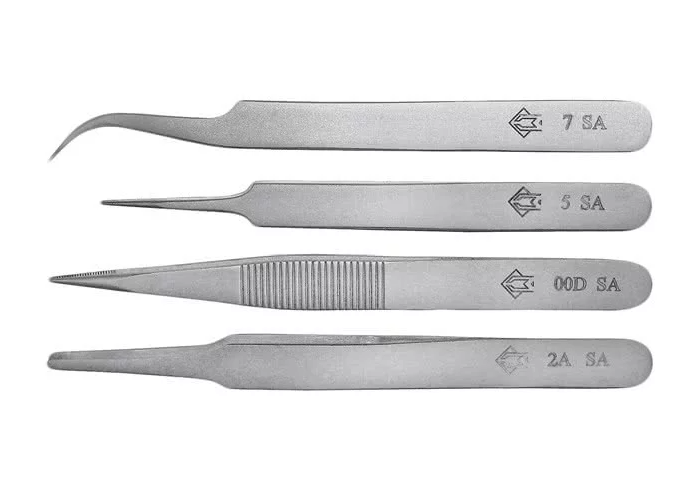
What’s next?
Of course, the range of tools for the electronics technician does not end with pliers, cutters and tweezers. A properly equipped workstation will also include such items as ESD protection, equipment, consumables or personal protective equipment, including: ESD mats and wristbands, soldering stations, desoldering machines, fluxes, adhesives and fume extractors.
The entire range of this equipment, the previously discussed PIERGIACOMI hand tools and many others are supplied by RENEX Group – one of the largest and longest operating Polish companies in the electronics industry. As a partner of such global brands as JBC, PACE, YAMAHA, TAGARNO, HELLER, or INDIUM, the Group supplies over twenty thousand types of products, including equipment, tools, clothing, furniture, and consumables necessary for service operations.
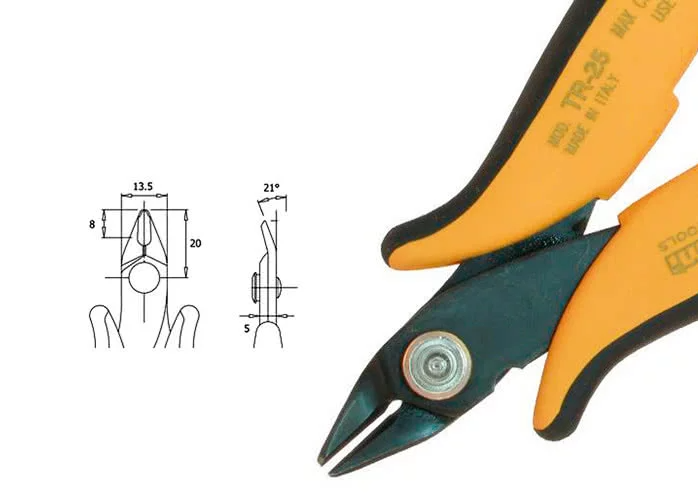
With full stock levels in Poland, the Group supplies almost all of its own and distributed products on hand, allowing its partners to respond quickly to unforeseen situations. This logistical and product support is complemented by professional warranty and post-warranty service.
Under its own REECO brand, the Group manufactures and supplies ESD clothing, anti-static furniture, universal robots, and specialized equipment for the electronics industry. The Group has also created RENEX TECHNOLOGY AND TRAINING CENTER and DEMOROOM in Włocławek, where the customers and partners of RENEX can see and check the equipment from the offer in action. The specialists working in the Centre also provide training, service and advisory support.
If you are interested, please contact RENEX Technical and Commercial Advisors – dth@renex.pl
